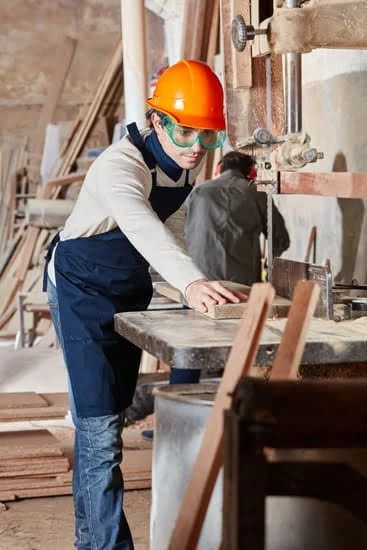Introduction
When it comes to woodworking projects, having the right tools is essential. In this case, a drill press is one of the most versatile and multi-functional machines that should definitely be part of a woodworker’s workshop. Drill presses offer numerous benefits over regular or handheld drills which make them a must-have piece of equipment for various types of craftsmanship.
More specifically, some of the main advantages that a drill press brings include precision drilling capabilities since the user can accurately set both the grain depth and angle depending on their needs. Additionally, they require less physical effort from the woodworker due to their design and construction which makes them ideal for large-scale projects as well as repetitive tasks such as holes for dovetail joints. They also provide steady and reliable performance with less vibrations than with manual processes making sure each piece is created with precision and accuracy. Furthermore, if needed drill presses can be used to sand as well as tap pieces without any major adjustments required to its settings giving users flexibility in their workflows.
When looking into purchasing a drill press for woodworking, some features to look out for include variable speeds, higher torque motor (usually 2 hp+), good build quality (ease in maintenance later on), digital readouts showing speed/depth setting etc., adjustable table height & position and heavy duty machine foundations (for good vibration dampening). This will help ensure that you have an efficient tool that’ll cover all your project needs regardless of size or complexity level. Ultimately though, finding out what works best for you comes down to personal choice but these considerations should make it easier on deciding what works best because they represent some important factors when comparing between different models according to different individual requirements.
Types of Drill Presses
When selecting the best drill press for woodworking, it is important to understand there are three main classifications. The first type is a floor mounted drill press, which is designed to stay in one place and will run on a powerful motor. They are simple to operate, with a large distance from the table to the spindle and generally have an adjustable speed control that allows you to select between low rpm’s for delicate operations or higher rpm’s for heavier work. Examples of these include: Grizzly Industrial G0724 ” this uses a 2 hp gear-head motor and can produce 630-3500 rpm; Jet JDP-17DX ” this is equipped with an LED read out can go up to 3450 rpm; and Shop Fox W1668 ” this includes 12 speeds ranging from 150 through 4200 rpm.
The next type of drill press available is the benchtop model, which is ideal for smaller workspaces as they are mounted directly onto a bench or table. These typically feature less power than their floor mounted counterparts but still offer respectable features such as adjustable speed settings, countersinking capabilities, and digital displays. Examples of these models include: WEN 4210 ” this 10 inch model offers five different speed settings that range from 550-3140rpm; Shop Fox W1650 ” this small benchtop has a variable speed range between 300-3100rpm; and SKIL 3320-01 ” offering five speed settings between 580 ” 3160rpm as well as infinitely variable speed control setting.
Finally, another type of drill press option is the radial arm model, which consists of an arm that extends outward from the base of it instead of being attached directly like the other models. This design offers more flexibility with regards to where drilling operations can take place due to its extended reach ability. Examples of these models include: Powermatic PM2800B 18″ Variable Speed Radial Arm Drill Press ” featuring 1hp motor capable of 785-3325rpm operating speeds; Baileigh DP-1550F 15 Inch Floor Model Drill Press ” providing 12 speeds ranging from 110″3000rpm; and Craftsman 9901 9 in Radial Arm Saw 1/2 HP Motor -which uses 6 speeds between 220 -3260 rpms for excellent accuracy during operation.
Exploring the Advantages of the Most Popular Types of Drill Presses
Benchtop drill presses are the most popular type of press for woodworking. They offer a good amount of power and torque but are limited in terms of motor speed, stroke length, and column depth. A benchtop press is an excellent choice for hobbyists who are just starting out as they are relatively affordable and can easily be moved around the workshop. They have a small chuck which allows them to handle both small and large drill bits.
Floor mounted drill presses offer more power and larger chucks than benchtop models, however they do tend to be pricier. If power is the main requirement then this type of press is probably the best option as it offers more powerful motors with longer strokes that allow you to take on tougher projects. Floor mounted models also tend to provide steadier cuts as their motors are bolted directly to the floor for added stability when drilling.
Radial arm drill presses are similar to floor mounted models in many ways, however they do provide even more capacity with further reach due to its adjustable arm which can reach into tight and difficult corners with ease. This type of press may require an additional budget for accessories such as specialized jigs and attachments, but if you have professional needs or demanding projects that require various drill bit sizes then this is likely your best option.
Picking The Ideal Type of Drill Press for Woodworking
When it comes to woodworking, the ideal drill press can make a massive difference in the quality of your projects. A good drill press should not only have many features, but also be powerful, precise, and require minimal maintenance over time. While the range of drill presses for woodworking on the market can be overwhelming, a few key factors will help you select the best one for your workshop.
Before purchasing a drill press, consider its motor power in relation to the types of workpieces you plan to work on. Generally speaking, 1/2-horsepower (HP) motors are suitable for wooden objects no deeper than 4 inches while motors with 3/4 HP or higher can handle larger pieces and deeper drills. Table size is another integral factor as it affects how large of an area your tool can accommodate and how accurately you can position your piece; a larger table allows you more room for leverage and better visibility when positioning items on it. Finally, accessorizing plays an important role both in terms of safety”goggles and eye protection are essential when drilling “and efficiency”a laser guide will certainly upgrade your performance as well as accuracy. Taking all these tips into consideration will ensure that you pick the perfect drill press for your woodworking project needs.
Woodworking Quality and Durability
When it comes to woodworking, having the right tool is essential for producing professional-grade results. When deciding on the best drill press for woodworking, there are a few key aspects to consider. First and foremost, it’s important to look at quality and durability. You’ll want a product made with strong materials that will offer long-term reliability and maintain its performance over time.
It’s also advisable to conduct some research and read reviews of different models before making your purchase. Each type of drill press has unique features, so it’s helpful to explore all of your options before settling on one type or model. Make sure the product you select offers the necessary power and speed for your projects as well as any additional features such as height adjustability, an adjustable table or protective guard. It’s critical that you choose a drill press that fits your needs both now and in the future – after all, you want something that can be used effectively for a variety of applications without needing frequent replacement parts or repairs down the road.
Gear Up Your Drill Press
The type of drill press and its features can have a significant impact on the quality of the finish in your woodworking projects. There are many styles of drills and different functions available, but to get the best performance for woodworking you should start by looking for specific features.
First, chuck size is important ” the larger the chuck size, such as ½” or …”, the more variety of bits, forstner bits, hole saws you can use with it. This makes it easier to make larger holes than those that could be made with smaller chucks. Some higher-end models also come with adjustable speed settings, allowing you to adjust RPM so that you can perform specific tasks accurately and easily.
It’s worth investing in optional accessories too; such as mortising kits, or circle cutting jigs. These tools allow you to easily create circular cuts in wood pieces and mortise joints quickly. Other valuable accessories include height adjusters which make it easier to create consistent depth holes for dowelling with Forstner bits or specialized sanding drums which fit into the chuck of your drill press, enabling faster creation of rounded edges on objects and precise work like sanding curved contours on furniture components.
Final Considerations
When selecting the best drill press for woodworking, it’s important to consider your needs and what features make sense for your particular project. It’s also worth comparing drill presses of different price points and functions to see which one fits your budget and workspace best. There are many options out there and a few key factors to consider when making your decision. Capacity and power are two big categories to look into; larger workshops might need more powerful machines that can handle bigger projects, while smaller workspaces would do fine with an entry-level drill press that won’t take up too much space. Additionally, build quality is something to keep in mind; cheap drill presses do not always last as long as models from more expensive brands. Ultimately, picking the right drill press for woodworking comes down to evaluating all these factors and choosing the one that meets all of your requirements.
Conclusion
When researching the best drill press for woodworking, it is important to take into account the many factors that might influence your decision. You should consider the type of woodworking you are performing, the space available in your workshop, and how much money you are willing to spend on a drill press. Also, make sure that you look at quality reviews to determine whether or not a particular model will meet your needs and preferences.
One of the most important things when considering which drill press might be best for woodworking is making sure it offers enough power and torque to handle the bigger projects. Look for a spindle speed range between 1,000 and 3,000 RPMs that provides plenty of capabilities while preserving control accuracy. A larger capacity drilling table should be considered if doing joinery, such as mortising door hinges or similar operations using larger diameter bits. As well as looking at various features on the machine itself, you should consider any accessories available such as drill bit holders, chucks, and quill feed mechanisms that increase functionality and provide more options with specific styles of projects.
By considering the facts above and doing research on various models in a given price range while taking into account what kind of woodworking operations you’ll be performing most often is sure to help ensure that you find the best drill press for your workshop needs. Be sure also to read as many user reviews online as possible before committing so that you can get detailed feedback from other users about their experience with certain tools – this can help inform your purchasing decision significantly by allowing you understand how effectively each tool performs.

Hi everyone! I’m a woodworker and blogger, and this is my woodworking blog. In my blog, I share tips and tricks for woodworkers of all skill levels, as well as project ideas that you can try yourself.





